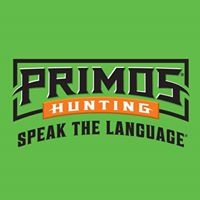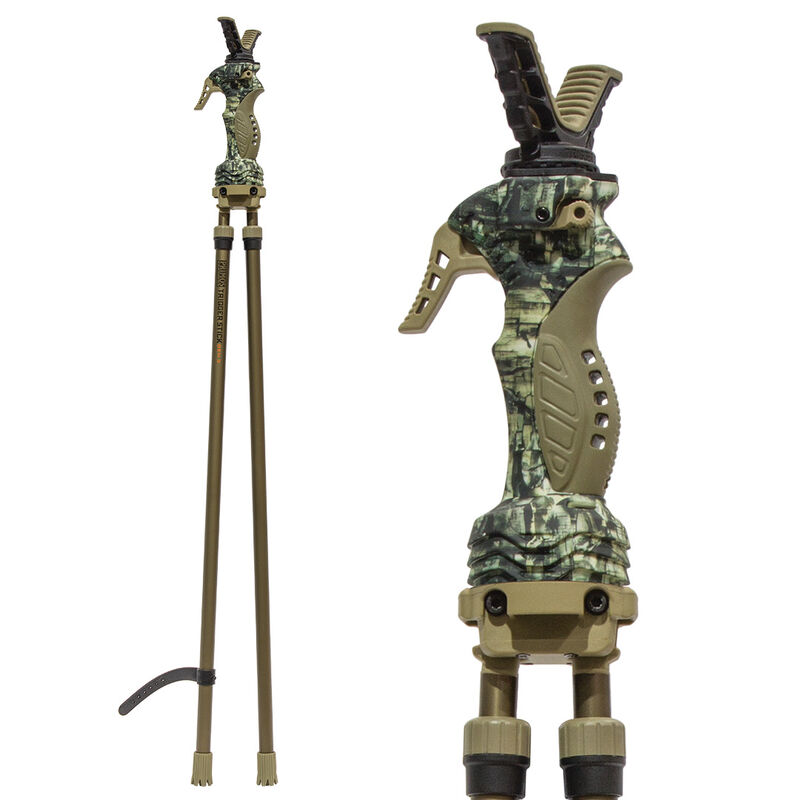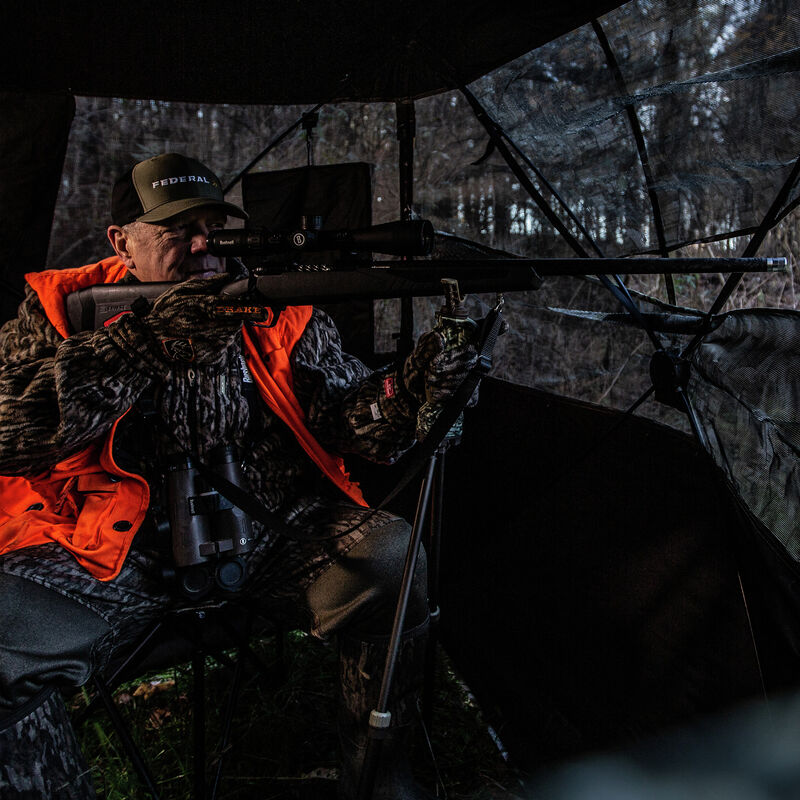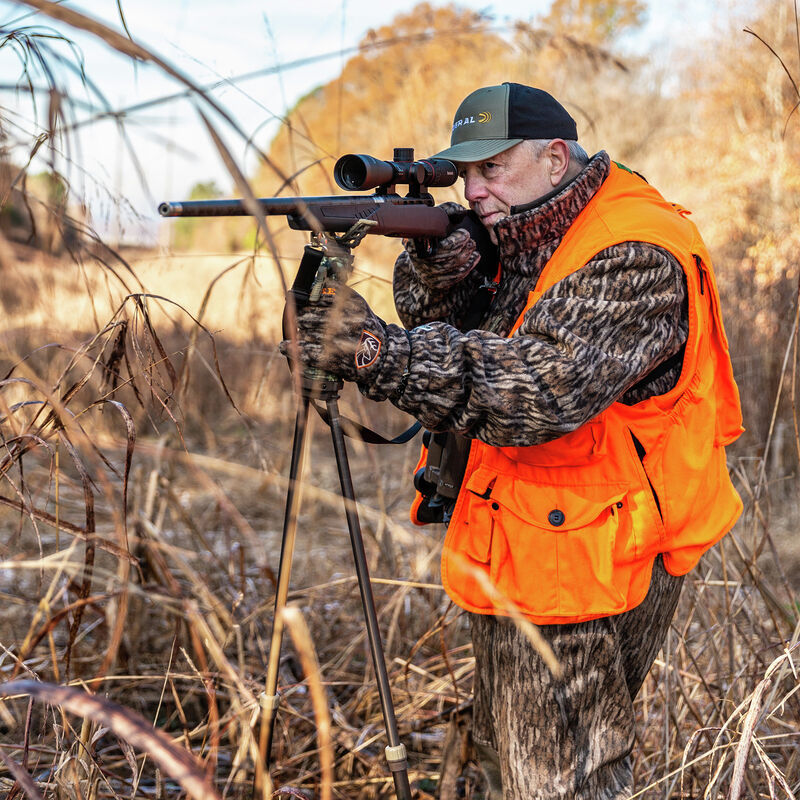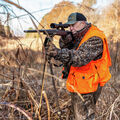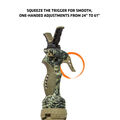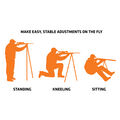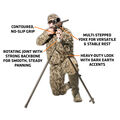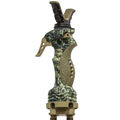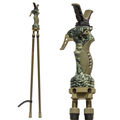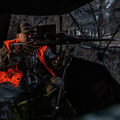| Zach Bowhay |
Late Season Elk Hunting
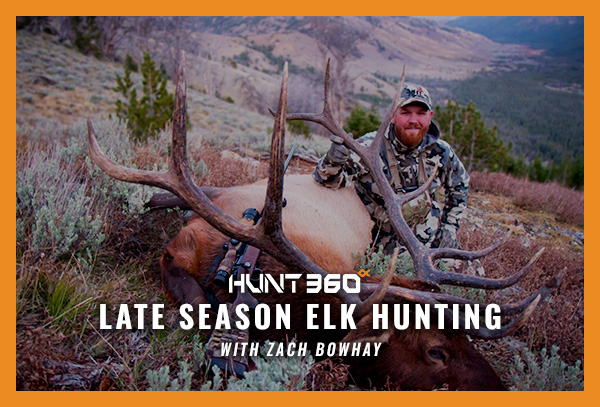
In my younger years, it was all about the elk rut for me, and I didn’t care about hunting them with a rifle or later in the season. As I got older, I decided I wanted to extend my season and hunt elk later and more often. At that point, I started applying for more late-season elk permits in my home state of Idaho and other surrounding states. With this strategy, I have had the good fortune of still going on my annual archery elk hunts and a late-season rifle or muzzleloader hunt of my own or with friends and family nearly every year.
On some “late-season” hunts, you will still see some rutting action and hear some bugling. For example, in 2018, my buddy Matt and I dogged a herd of elk on November 10th with a bull that was bugling excessively and chasing cows as if it were mid-September. This isn’t the norm, but you will often hear bugling and see bulls with cows late into October and even November.
That being said, calling elk shouldn’t be your go-to tactic during the late season, and other methods more often yield much better results. Here are some tips if you are heading out this season to chase some bulls after the rut winds down and bulls settle in to start preparing for the rigors of winter.
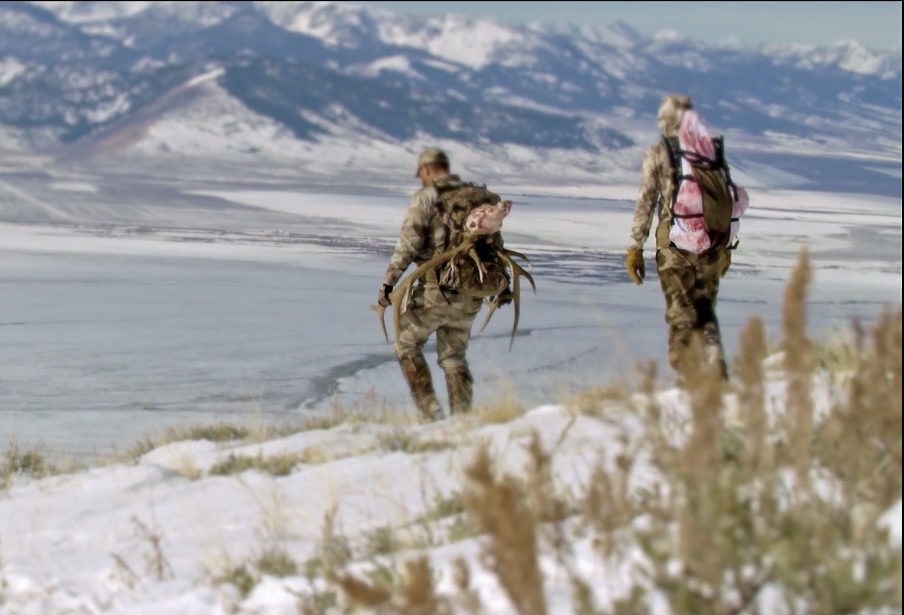
Get High and Glass
Many folks feel that drawing or attaining a rifle elk tag means an easy hunt for a big bull is in the cards. Often, this can’t be further from the truth. In many areas across the west, these hunts occur after the elk have been hunted for a month or two by bowhunters and maybe some early rifle hunters. The urge to drive around or hunt close to the road can be strong, especially with colder, shorter days. One of the best ways to find bulls to pursue is to get high and glass in the early and late hours of the day. Even if it means skipping a morning or evening hunt, get high and glass bulls to either hunt that evening or, if glassing in the evening, find bulls for the morning hunt. Once they are spotted, you’ve won half the battle. Now it is time to cover ground while the elk are bedded during the day or early in the morning with your headlamp. Either way, get yourself in a position to strike when they are out feeding early and late.
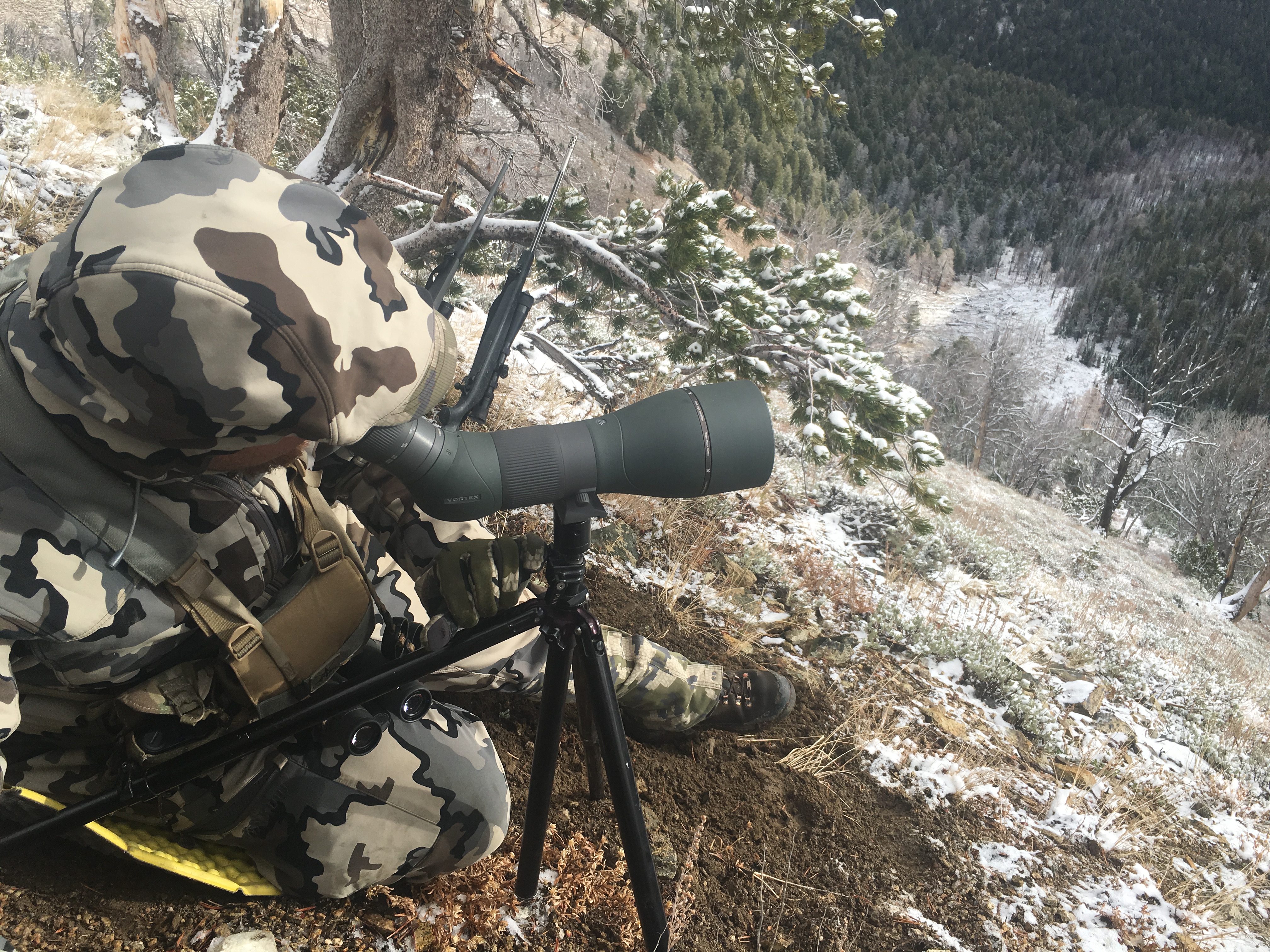
Off Grid Bulls
This subject ties in nicely with the last topic. Bull elk quite literally run themselves ragged during the rut. They lose much of their body weight and are pretty beat up when the rut is over. So, once the rut is over, they break off alone or in small bachelor herds and look for a place to recoup their bodies for the long winter ahead. Often, these bulls will find little hidey holes off the grid, away from where the rest of the elk spend their time. It seems like when the rut is over, they want to get away from the madness and enjoy peace and quiet. Sometimes, this may be in the wide open, but often, they are in sparse timber or broken terrain where they can feed and mill for long periods of the day without being completely exposed at all times. So, utilize the get high and glass approach, but make sure you are looking in every nook and cranny because sometimes they might be in the area but hidden just out of sight in a small side canyon or draw. Also, though, I have found them far from the roads in an absolute hell hole. The bottom line is if elk are around in the form of small or large herds of cows with small bulls, the larger bulls are around too; you have to figure out where.
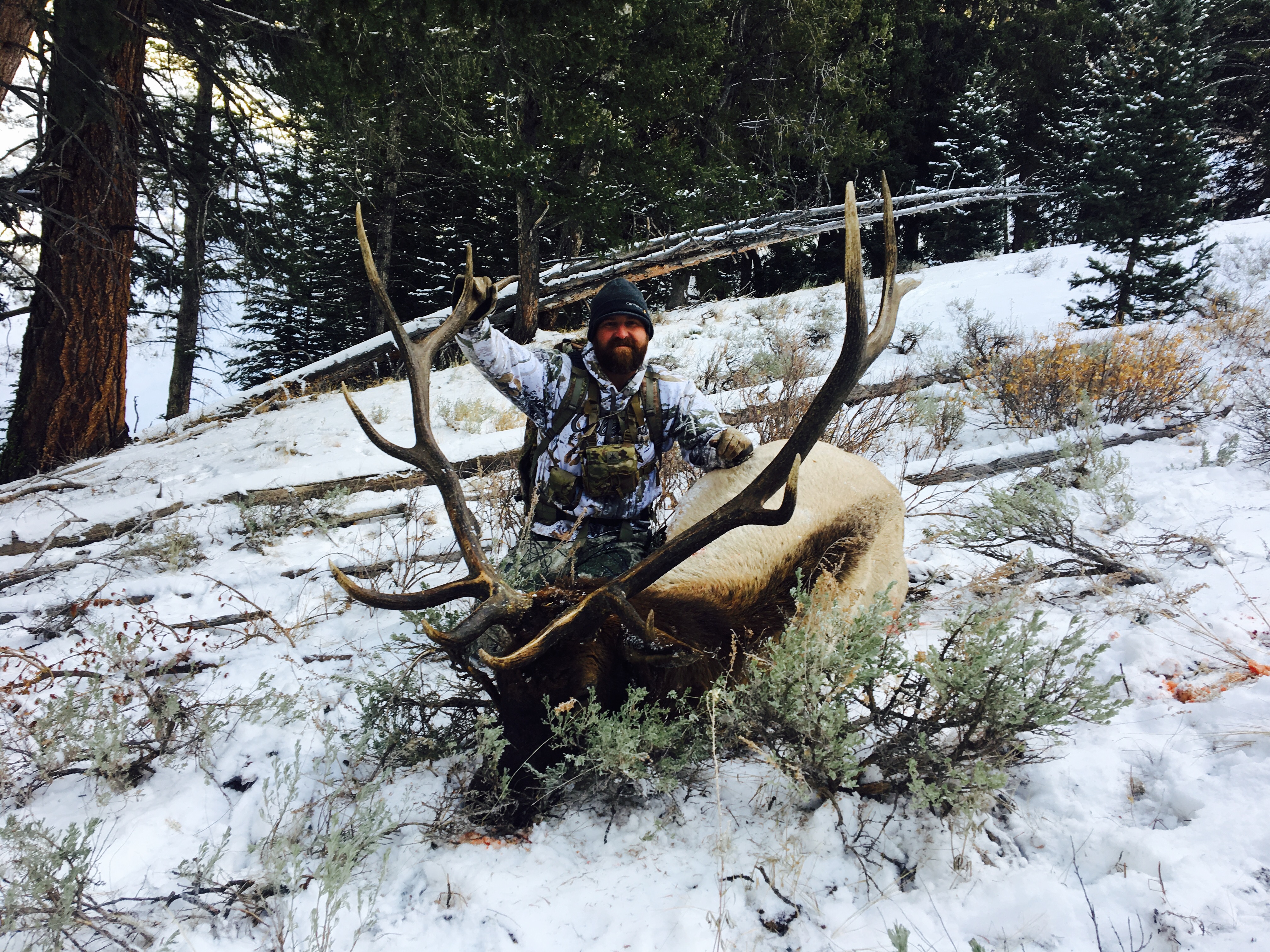
Timber Bulls
In some areas, the bulls won’t be out where you can spot them at all because they live in thick timber, where they have places that they can feed and rest without exposing themselves to open terrain where you can spot them. If this is your scenario, you have no choice but to go into the timber with them and find them. In my opinion, this type of hunting gets better when there is snow on the ground. In this situation, it’s best to cover ground until I find fresh tracks and then slow down and be much more methodical with my travel. I wouldn’t say I am still hunting in the true sense, but my pace slows significantly from when I am covering ground just looking for sign. Move slowly and scan your surroundings constantly. Even in this situation, it pays to use your optics even in thick timber. Scan the timber as far as you can see and up close. Bedded elk can be challenging to spot, and you must look closely. Be looking for parts of elk, not always the whole elk. Also, once you spot an elk and plan to make a move, always be aware of your surroundings. It’s easy to get tunnel vision on one elk, but your hunt can quickly be spoiled by a buddy of his bedded nearby, watching his blind spot. We shouldn’t give them that much credit, but elk, like all animals, have a strong desire to live. That desire seems to strategically make them bed in spots that give them and their compadres as many advantages as possible.
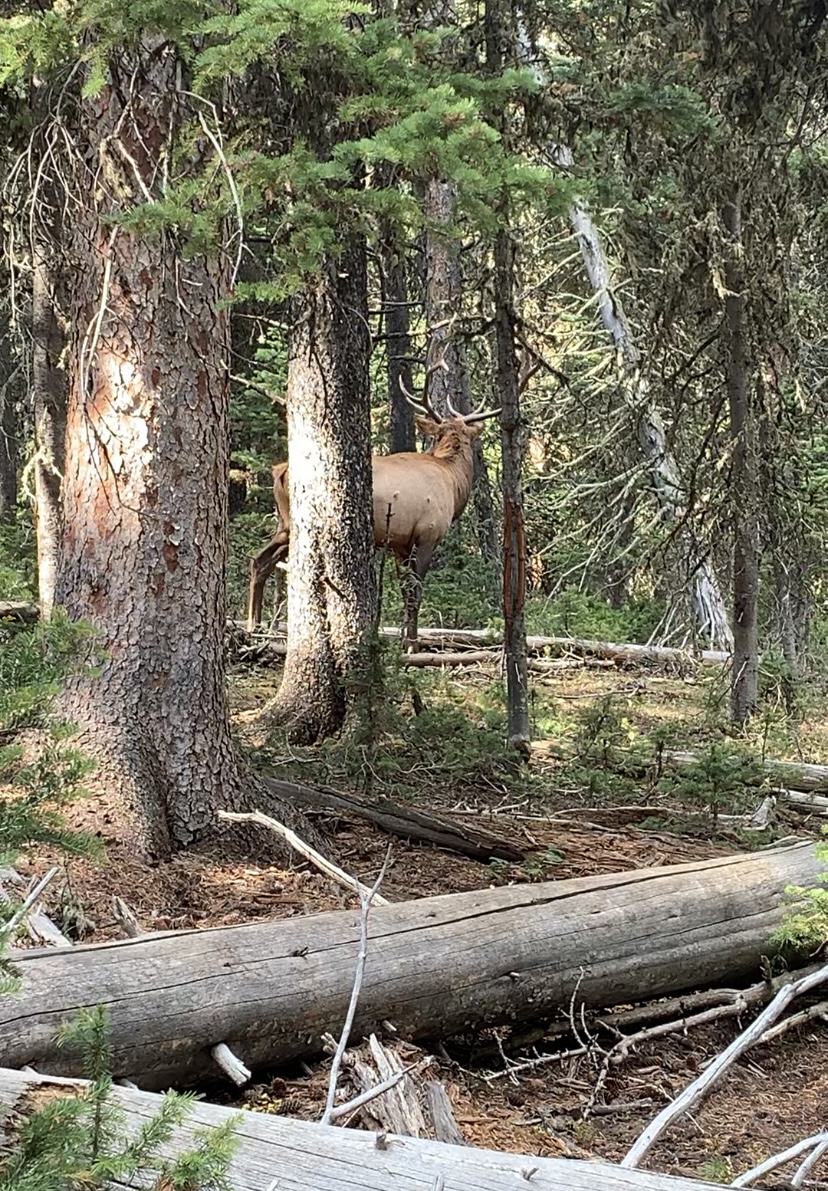
Tracking
Speaking of elk tracks in the snow, if you are hunting in snow that has freshly fallen, you can be in a perfect position to track a bull or herd of bulls. If the snow has fallen during the night and you cut tracks from a bull, it’s a good idea to take up that track and stick with it. More than once, I have followed a bull to its bed that I could have easily killed. However, I have never taken a bull with this method because I have passed on the bulls I have tracked. This method is effective, though, and I am confident that eventually, I will kill a great bull that I have followed to his bed.
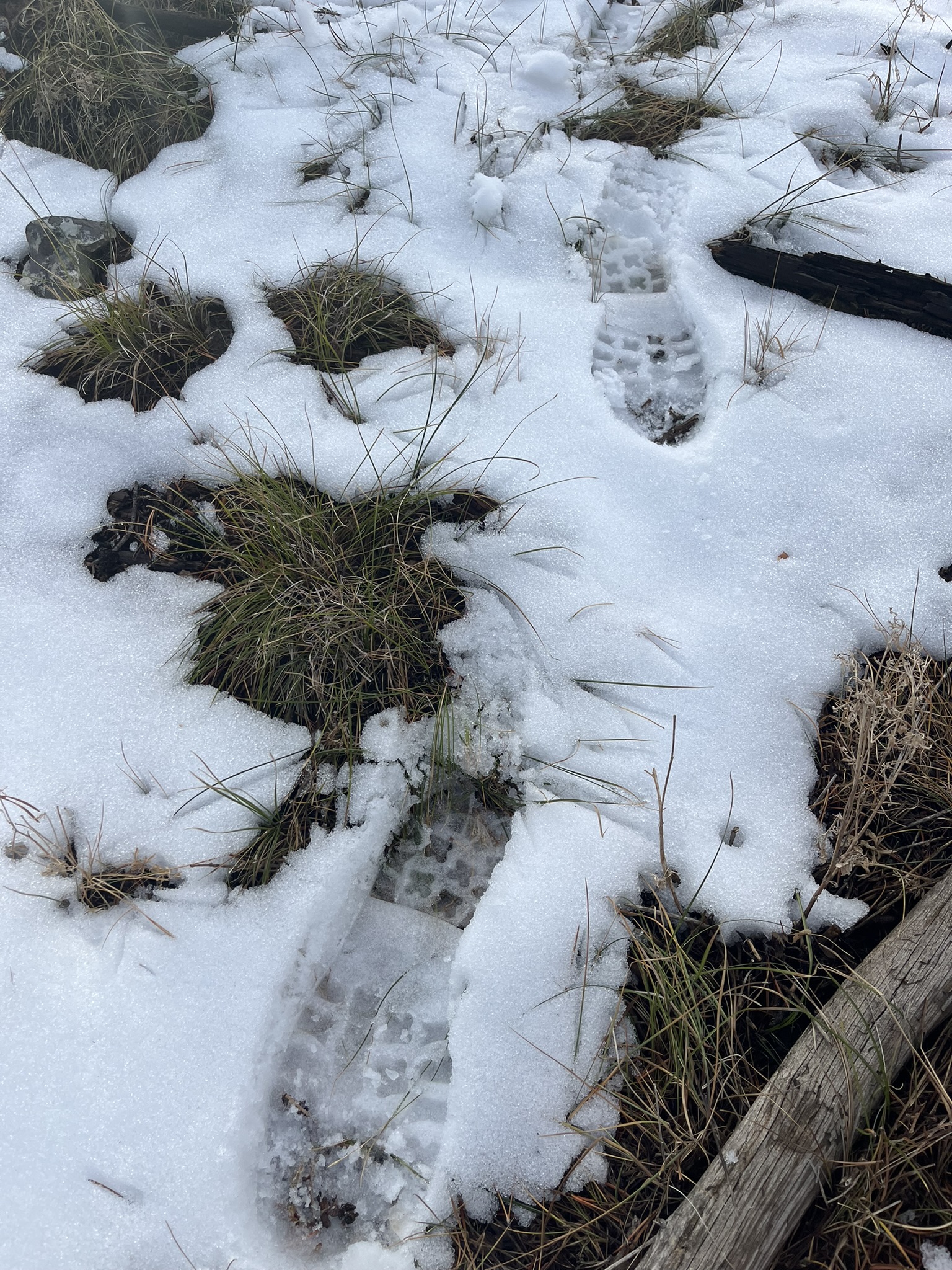
Gear
Like any hunt, having the right gear can greatly enhance your hunts enjoyment and success. Here are a few gear pieces that have helped me on my hunts over the years.
Vortex Razor HD22-48x65 Angled
Some things are optional; others are deal breakers. I will not go on a late-season elk hunt without a quality spotting scope. I have been using a Vortex Razor HD angled spotting scope for the past several years. This scope is of high quality and doesn’t break the bank. I recommend picking one up or something similar if you plan an elk hunt out west.
Kenetrek Mountain Extreme 400
Once the temperatures drop, I like to have a boot like the Kenetrek Mountain Extreme 400. They are warmer than my early-season boots but not so insulated that my feet are on fire while hiking. I like them to have just enough insulation that I can sit for extended periods of glassing, but not overly bulky and heavy. For me, the Mountain Extreme or similar boots are the perfect balance.
Primos Trigger Stick Gen3
Being able to put your shots on target is of course, always the goal. When hunting open country, where longer shots are typical, I prefer to shoot prone when possible. However, when I am in the timber or tracking animals, I prefer a quick, yet stable shooting stick like the Primos trigger stick. These things are great when you need to get a shot off and don't have time to waste. Just pull the lever, and they sticks drop and you have a good shooting rest, regardless of your position or grade of the terrain.
Final Thoughts
As I mentioned earlier, the rut to me is still the ultimate time to pursue bull elk. It does seem that every year, though, I am a little more excited for my late-season elk hunts. Matching wits with a bull during this time frame can be challenging and thrilling but far from easy. No matter your terrain or area, it can be done, but generally success is the direct result of planning and effort. Cover ground, look for a sign, and glass your tail off, and you might be lucky enough to put your tag on one of these late-season brutes.
|
Sign Up For
|

|
|
What Is HUNT360?
Hunt360 is a community dedicated to providing trustworthy reviews of hunting gear from real people like you. We value your experience - we want to know what gear you've tried, what worked for you, and what didn't. Your reviews matter to other hunters like you and helps us all go out better equipped!
|
|







